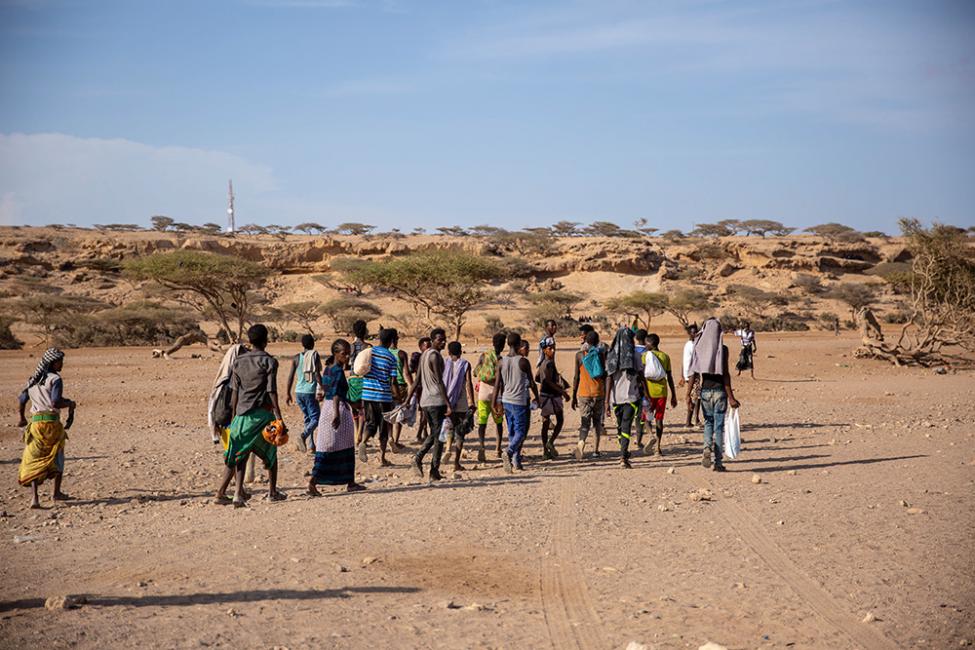Eastern Africa is the most diversified region with regard to the origin of international migrants from Africa, as it receives significant shares of migrants from all other regions except Western Africa, according to the Economic Development in Africa report 2018.
Growing labour demand in the region’s diversified economies the report says, notably in Kenya and increasingly in Rwanda, has been a driver of intraregional migration. Demand in services and trade has fuelled migration from Uganda to EAC partner States, in particular, Kenya, Rwanda, and Tanzania, and from Kenya to Burundi, Rwanda, Uganda, and Tanzania.
The report by United Nations Conference on Trade and Development (UNCTAD) says that in 2000–2017, conflict and political instability were a driver of forced migration from Middle Africa to Tanzania and from Northern Africa, mainly the Sudan, to Uganda.
The report title, “Migration for Structural Transformation” indicates that intra-African migration based on inter-State differences in skills endowments is gaining prominence. For example, within EAC, Kenya remains the leading receiving country, with migrants originating mostly from outside Eastern Africa, yet it is also the main sending country to Eastern and Southern Africa.
“With regard to regional net migration in 1985–2015, Northern and Western Africa consistently reported negative total net migration, that is, in these regions, emigration exceeded immigration,” says the report.
“Eastern, Middle and Southern Africa alternated between being net sending and receiving regions, reflecting ongoing regional dynamics, with political instability in Middle Africa driving migration to Eastern Africa and, in Southern Africa, from Zimbabwe to South Africa.”
Undocumented migration between Kenya, Uganda and Tanzania for work on tea, coffee and cotton plantations has taken advantage of common cultural affinities, languages, currencies and shared colonial experiences
Generally in 2017, the main migrants receiving countries were South Africa (4.0 million), Côte d’Ivoire (2.2 million) and Uganda, Nigeria, Ethiopia and Kenya (each exceeding 1.0 million, in descending order). The main receiving countries of intra-African international migrants were South Africa (2.2 million) and Côte d’Ivoire (2.1 million), highlighting their importance as migration hubs. Uganda, Ethiopia, Nigeria and Kenya (each exceeding 1 million, in descending order) were also major receiving countries of intra-African international migrants.
Laura Thompson, Deputy Director-General, IOM, said that migration is a complex issue that is further complicated by the diverse range of bilateral, regional and international discussions currently taking place.
Almaz Negash, Founder and Executive Director, African Diaspora Network, said there is need “not just data but also marketing”. She noted, for example, that the African diaspora contributes $55 billion to the US economy alone.
“The refugee crisis “can be a force for good” if migrants are supported to contribute to the economic vitality of their host countries and within Africa,” said Ms Negash.
Out of an estimated 235 million international migrants in 2013, about 21 million were from sub-Saharan Africa, which means that there is only one sub-Saharan migrant out of 10.
According to the report, the abolition of work permit fees in 2013 for nationals of Kenya and Rwanda has allowed for labour mobility between the two countries. Labour legislation in Rwanda, which has provisions that allow citizens from EAC partner States to work in the country, and for granting work permits to foreign workers, along with the establishment of a temporary resident permit for semi-skilled workers, have been vital in facilitating labour migration, including among semiskilled migrants. In addition, cross-border investment has been a catalyst for intraregional migration.
“The strategy of Rwanda to attract investment from EAC partner States and highly skilled workers, both of which are elements of its national migration policy framework, has helped to stimulate intraregional economic migration,” says the report.
“Significant private investment by EAC partner States has contributed to business growth, generated employment and helped drive intraregional labour migration. Investment by Kenya in 2000–2014 in banking, construction, education, information and communications technologies and insurance and in the retail sector, contributed to the registration of 1,302 Kenyan businesses and the employment of almost 250,000 Rwandan and more than 2,000 Kenyan workers by 2014.”
Similarly, investment by cross-border small and medium-sized enterprises in various sectors, including the automotive and construction sectors, as well as in services such as hospitality, has generated employment for Rwanda nationals while attracting semiskilled migrants from the region. The strategy of Rwanda to scale up the use of English as the language of instruction has provided an impetus for teacher recruitment from EAC partner States.
However, there is some evidence of de-skilling. For example, 27 per cent of highly skilled migrants in Uganda work in semi-skilled positions in other countries in Africa. Similarly, 16 per cent of young highly skilled migrants from Kenya with qualifications in management and tourism, among others, are unable to find employment in their professions in regional labour markets, suggesting a possible skills mismatch
